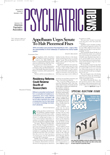A preliminary, small clinical trial has produced promising results that suggest vigabatrin may be an effective treatment to curb cocaine craving and use.
Researchers at New York University (NYU) School of Medicine and the Brookhaven National Laboratory reported in the September 22 online issue of the journal Synapse that the medication significantly reduced cocaine use in people who had used cocaine daily for at least three years. (The study was posted online in early release due to the dramatic results. It will appear in print in the journal’s December issue.)
Vigabatrin, also known as gamma vinyl-GABA or GVG, is an anticonvulsant medication sold under the brand name of Sabril in Europe, Canada, and Australia. The medication has not been licensed by the U.S. Food and Drug Administration, however, mostly out of concern for significant side effects involving severe and persistent tunnel vision associated with long-term therapy at doses higher than those used in this study. It remains unclear whether the visual defects reported with the drug are reversible.
“GVG reduces levels of dopamine, the ‘feel-good’ chemical that floods the brains of cocaine users, providing the ‘high’ they crave,” said Frank Vocci, M.D., director of the Division of Treatment Research and Development at the National Institute on Drug Abuse (NIDA), which funded the clinical trial. The study was done in Mexico. “Using GVG to temper the dopamine system may very effectively block the addiction-related effects of cocaine.”
“This preliminary finding has important implications for our medications development program,” added NIDA Director Nora Volkow, M.D., in a written statement.
Nineteen men and one woman entered the study, and eight of them completed the trial. Study participants received increasing doses of GVG for the first week until they reached the highest dose of 4 gms a day.
“At the time the study was written, these eight people had remained drug free for between 46 and 58 days,” noted lead author Jonathan Brodie, M.D., the Marvin Stern Professor of Psychiatry at NYU. “All eight of these [patients] have remained clean for at least another four weeks despite no longer being on GVG and have indicated that their craving has not returned. Hence, they have all been drug free for a minimum of 74 days and counting.”
None of the persons in the current trial noted any visual changes; however, the incidence of such side effects is so common with the medication that it is considered to be second-line treatment in the countries where it is approved.
Side effects reported in this trial included somnolence and headache persisting for weeks. Significantly, all patients gained weight (an average of 18 pounds), most likely due to cessation of cocaine use directly rather than as a side effect of GVG.
Those who completed the trial also manifested clear behavioral changes. They showed significant increases in self-esteem, were able to re-establish family relationships, and were able to return to or actively seek work. Despite remaining in community environments during follow-up in which drugs were readily available, the investigators noted, those who completed the study remained free of cocaine use.
Most of those who did not complete the study dropped out within the first 10 days of GVG treatment, none for reported side effects or adverse events.
Most subjects who continued to use cocaine did so in reduced amounts, and with the researchers using an outcome of an 80 percent reduction in cocaine use, 10 of the 12 subjects who took GVG for at least 10 days met the criterion.
“Cocaine addiction represents a disease process for which there is no recognized effective drug treatment,” said Brodie in the NIDA statement. “Now, for the first time, there are compelling human data that support the efficacy of a drug for this problem.”
An abstract of the study is posted on the Web at www3.interscience.wiley.com/cgi-bin/abstract/105558240/ABSTRACT. ▪
